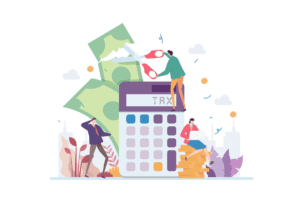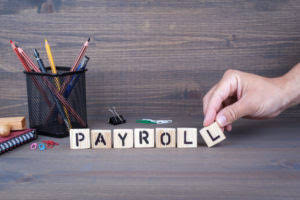
If the rate implicit in the lease is not readily determinable, a lessee should use its internal incremental borrowing rate. The lessee can benefit from the right of use on its own, or together with other resources that are readily available to the lessee.
- You must provide a currency conversion type of user, corporate, and such from GL.
- Under ASC 842, the ROU asset is calculated as the lease liability amount and any lease prepayments plus any direct costs, less any lease incentives.
- Apply the following thresholds when determining when to capitalize an equipment or facility lease.
- Fortunately for lessors, the changes are not as impactful as the changes made in lease accounting for lessees.
- Implementing the new lease standard with spreadsheets requires a lot of time, sometimes taking weeks to build a spreadsheet with all the necessary formulas for one client.
- Under an operating lease, the lessor records rent revenue and a corresponding debit to either cash/rent receivable.
- Here are some articles to further explain finance and operating lease accounting under ASC 842, including full examples and journal entries.
The underlying asset is transferred back to lessor at end of the lease term. Every vertical market has its unique business needs, requiring software partners to develop specific capabilities and solutions for industry. That’s why CCH Tagetik offers industry-specific capabilities and packaged regulatory reporting within its financial performance platform. Enable digital transformation and drive strategy with all your financial processes and data in a unified platform — owned by Finance. Serving legal professionals in law firms, General Counsel offices and corporate legal departments with data-driven decision-making tools. We streamline legal and regulatory research, analysis, and workflows to drive value to organizations, ensuring more transparent, just and safe societies. Installs a new definition of indirect costs that likely would result in fewer indirect costs being capitalized.
Ii) leases where the underlying asset has a low value when new – this election can be made on a lease-by-lease basis. Agency costs, or the separation between the asset’s ownership and control of the asset . Lucernex Manage complex real estate with lease, site planning and construction solutions. Ownership of the underlying asset is shifted to the lessee by the end of the lease term. A customer enters into a contract with a vehicle owner for the transport of cargo from the Port of Cleveland to Huntsville, Alabama on a specified vehicle.
Ibor Reform And The Effects On Financial Reporting
Lessees are required to calculate the present value of future lease payments to establish a lease liability and the related ROU asset. Found in Accounting Standards Codification 842, the new standard applies to all businesses that report their financial results in accordance with U.S. Although ASC 842 will require lessors to make some changes to the way they report leases on their financial statements, its biggest impact will be felt by lessees, particularly those with leases that are currently classified as operating leases. The FASB new lease accounting standards, ASC 842, replaces the current guidance, ASC 840, effective December 15, 2018 for public companies. Private companies have been given an additional year to comply, so effective December 15, 2020. The new standards introduce changes to how companies are required to account for operating leases on the balance sheet. Previously, under ASC 840, companies were required to capitalize their financing leases while leaving their operating leases disclosed in the footnotes.
- Periods covered by an option of lease extension if the lessee is reasonably certain to exercise that ability.
- At the end of the two-year period, the right-of-use asset has been amortized to $868,236, and the lease liability has been amortized to the same amount.
- The calculation is performed using the term and payments specified in the lease and a rate of return that is specific to either the lease or the organization.
- It’s more complicated under IFRS because you need separate numbers for the Lease Interest, Lease Depreciation, and Principal Repayments.
- Any reduction of this value reduces interest income recognised over the remaining lease term and is recognised immediately as an adjustment to the value of net investment with a corresponding one-off impact in P/L (IFRS 16.77).
- Many organizations have dozens, or even hundreds, of operating leases, which can result in a huge gap for anyone trying to understand that company’s financial situation via their balance sheets.
The goal of initiating such programs may be for entities to rightsize their real estate portfolios to manage costs while adequately supporting their evolving business needs. Journal entries are documents that record the transactions between the lessees and lessors. The contents of a journal entry will vary depending on if the entry is completed by the lessor or the lessee and depending on if it a capital or operating lease. One silver lining of implementing the new standards is departments in your organization will begin working together more seamlessly to manage and account for leases. Transitioning to the new standards provides an opportunity to integrate processes and tools so all stakeholders have the same understanding of lease agreements and how the contracts affect the business.
Business
The vehicle is explicitly specified in the contract and the supplier has no substitution rights. The cargo will occupy substantially all of the capacity of the vehicle. The contract specifies that the cargo is to be transported on the specified vehicle and the dates of pickup and delivery. The supplier must operate and maintain the vehicle and is responsible for the safe passage of the cargo onboard the vehicle. We are the American Institute of CPAs, the world’s largest member association representing the accounting profession. Today, you’ll find our 431,000+ members in 130 countries and territories, representing many areas of practice, including business and industry, public practice, government, education and consulting. There’s a lot to be said about the new IFRS 16 and ASC 842 leasing standards.
This allocation may have a significant impact on the recognition of the right-of-use asset and liability for the lessee and revenue for the lessor. The lessor in particular has the extra complexity of applying the new revenue recognition guidance in Topic 606 to the non-lease components. The lessee is given a practical expedient, discussed below, to ignore the effect of non-lease components. Like IFRS 16, GASB 87 also uses a single model approach, in which all leases are classified as finance leases. Under the new standard, recognizing a lease liability and lease asset for all leases formerly classified as operating is a significant change.
Following the second Exposure Draft, the IASB decided to require all leases to be treated as finance leases. The FASB decided to maintain the traditional distinction between capital and operating leases (and reverted to that terminology rather than “Type A/B”). For both capital and operating leases, a separate footnote to the financial statements discloses the future minimum rental commitments, by year for the next five years, then all remaining years as a group.

The accounting and reporting of the lease in different ways have varying effects on financial statements and ratios. The interest rate that yields a present value of the lease payments and the unguaranteed residual value equal to the sum of the fair value of the underlying asset and any initial direct costs of the lessor. Government entities reporting under GASB 87 recognize a lease liability and related lease asset at the commencement date of the lease. The lease liability is equal to the present value of the expected lease payments over the lease term and the related lease asset is equal to the lease liability with a few minor adjustments. While the lessee model for IFRS 16 is a single model approach, for lessors the operating and finance classification model continues. Lessors are required to determine if a lease is classified as an operating or finance lease and use the appropriate accounting treatment. A lease is a type of transaction undertaken by a company to have the right to use an asset.
Lessor Accounting
While some may struggle with the technology aspect, high workload or poor processes, others contend with deficient Internal Control over Financial Reporting . Often, processes and systems established during a transition to International Financial Reporting Standards 16 do not consider current developments or take advantage of state-of-the-art technology offerings. Enabled by lease accounting data and technology, our services and solutions provide trust through assurance and help clients transform, grow and operate. Accounting for leases where Harvard is the lessor follows the same rules outlined above, except that Harvard is on the other side of the transactions. If you have questions about this accounting, please contact Financial Accounting and Reporting.

Depreciation must also be considered and charged on the income statement. Termination PenaltiesOn the commencement date, a lessee should consider all relevant information to determine how certain they are to exercise an option to terminate the lease early. The lessee should include the early termination in the lease term unless it is reasonably certain not to terminate the lease early. The termination penalty should be included in the measurement of the lease liability. If a lessee changes its assessment of how certain it is not to terminate the lease early, it should remeasure the lease liability and discount the new lease payments with the appropriate rate . It is reasonable to conclude that the lessee would account for the lease arrangement as an operating lease. Therefore, the lessee would make the journal entries for year 1 and year 2 shown inExhibit 1.
Accounting For Leases Under Fas 13
He is a frequent speaker at National Accounting and Valuation Conferences. Mr. Chilakapati is the national lead for complex financial instrument valuation at Alvarez & Marsal. Simply select from our library of more than 100 templates, or configure outputs on the fly with our ad-hoc reporting engine. Our team of experienced accountants, attorneys, and lease managers is here to help you get up to speed, hit the ground running and handle any questions along the way. We understand the complex challenges that the Office of the CFO faces and translate that knowledge into intuitive, enterprise-scale CCH Tagetik performance management software solutions. Trusted clinical technology and evidence-based solutions that drive effective decision-making and outcomes across healthcare.
While the new reporting standards do not change the core economics of your business, certain important finance ratios may shift. If your company currently has a number of off-balance sheet leases that, going forward, will be recorded on the balance sheet, it is a good idea to meet with your lenders and sureties about the potential changes in your reporting. A sudden increase in liabilities on a balance without prior warning or explanation may trigger cause concern with lenders, so it’s best to make sure everyone is on the same page. Depending on your situation, you may want to discuss updating the terms of any covenant to build in needed flexibility to prevent violations brought on by any potential future changes to accounting standards. The Financial Accounting Standards Board established principles for lease accounting in its Statement 13, Accounting for Leases, and its numerous amendments. These statements specify the appropriate accounting for leases through their classification as either capital or operating. Governmental Accounting Standards Board codification provides that FASB 13 should be the guidelines for accounting and financial reporting for lease agreements, except for operating leases with scheduled rent increases.
When the lease agreement is classified as a finance lease, the lessor will calculate the net investment in the lease using the present value of future expected lease receipts and record this amount as a receivable. Lessors are also required to derecognize the carrying value of the underlying asset. Any difference between the net investment in the lease and the carrying value of the underlying asset is recognized as a gain or loss on the income statement. The accounting for the lessor is largely unchanged from ASC 840 to ASC 842. Lessors continue to recognize lease income for their leases, and balance sheet recognition requirements stay predominantly the same. The lease agreement’s underlying asset will continue to be classified as the lessor’s fixed asset. The FASB, IASB, and GASB have released new lease accounting standards over the last several years, which are ASC 842, IFRS 16, and GASB 87, respectively.
Tyson Foods was one of the first Fortune 500 companies to implement a lease accounting software application. Learn from Tyson’s experience including their approach to the project, key lessons learned, and pitfalls to avoid. According to the rules under IFRS 16 (ASC 842 in U.S. GAAP), which went into effect in 2019, companies now treat leased assets (e.g., buildings and equipment they are renting) as if they had purchased the assets using debt.

An operating lease is a contract that permits the use of an asset without transferring the ownership rights of said asset. An operating lease is a contract that allows for the use of an asset but does not convey ownership rights of the asset. In the early years, the amount of taxes is higher in a finance lease than in an operating lease.
Right Of Use Asset Rou
Healthcare Technology Management Manage the full lifecycle of medical devices and equipment and mitigate risk. Facility Asset Management Manage facilities, assets, contractors and work orders to improve efficiency. Maintenance Connection Empower your team and maximize asset maintenance processes with CMMS software. Data Insights Leverage the power of data to streamline hospital asset and equipment planning. Warehousing contracts – although typically outsourced, these agreements may contain language that meets the definition of a lease. Transitioning is a monumental task, in correlation with the significant change to the face of the financials.
- The lessee has a purchase option to buy the leased asset, and is reasonably certain to use it.
- On the other hand, costs attributable to securing the asset itself should be included in the lease payments for both classifying and measuring the lease.
- Lessors are required to determine if a lease is classified as an operating or finance lease and use the appropriate accounting treatment.
- Although the FASB did not include a bright-line percentage in ASC 842 as in prior guidance, it has indicated that 75% of the asset’s remaining economic life is a reasonable approach.
- Select to receive all alerts or just ones for the topic that interest you most.
- Whether you have just a few leases or thousands, you can get control of constantly changing assets and terms, decentralized data, and evolving compliance standards.
A bargain purchase option (i.e., one that is reasonably certain to be exercised) for the leased asset exists. Lease accounting is the process by which an organization records the financial impacts of their leasing activities in their accounting calculations and reports. Termination rights – The lessor may terminate the lease at any time if the lessee breaks any clause of the contract, including damage to or misuse of the asset. Ownership – Though lessees temporarily own the asset, they are merely borrowers. Lessors retain legal ownership, though ownership may be transferred to the lessee if he, she, they, or it purchases the asset at the end of the contract term. Optimize your lease portfolio and ensure compliance with ASC 842 using our powerful, robust lease accounting and administration software.
Lease Accounting Under The Old Standards
However, if there are 40 straightforward leases and 10 complicated ones, you might need to extend your preparation time by a month or more to allow for the proper conversations and decisions to occur. By using this chart, you can estimate how many months you may need for each of the major implementation categories based on your lease population. You can create a timeline of key dates for the new lease standard tailored to your company that will help you to plan and monitor your progress. The minimum lease payment is the lowest amount that a lessee can expect to make over the lifetime of the lease. Peggy James is a CPA with over 9 years of experience in accounting and finance, including corporate, nonprofit, and personal finance environments. She most recently worked at Duke University and is the owner of Peggy James, CPA, PLLC, serving small businesses, nonprofits, solopreneurs, freelancers, and individuals. The market for facility management service providers is strongly affected by evolving customer expectations and demands.
The lease term represents the majority of the remaining economic life of the underlying asset. However, if the commencement date falls at or near the end of the economic life of the asset, this should not be used for purposes of classifying the lease.
Lessee Accounting
The total amount of the lease payable, taking into account debit and lease payable account credit. Webinars On-Demand View previously recorded webinars to drive value for your organization.
What Can I Do To Prepare For The New Lease Accounting Standards?
It allows a lessee to own an asset with the help of direct finance from the lessor. The lessee has the option to be the permanent owner of the asset at the end of the lease term. In Feb. 25, 2016, FASB published a new lease standard that represents a complete overhaul of financial reporting in this area. For example, a calendar-year public company presenting three comparative years would retrospectively apply the guidance to its income statement ending Dec. 31, 2017.
Other times, a triggering event occurs that was not otherwise anticipated. Generally, this is something that requires the lessee to reassess the lease term. The date as of which this triggering event occurs is called the remeasurement date. Note that the lessee should also update the discount rate and any variable lease payments as of the remeasurement date. Under the previous lease standard, ASC 840, payment obligations of “operating” leases are not reflected on the balance sheet even if you have committed to many years of payments.
Under ASC 842, the ROU asset is calculated as the lease liability amount and any lease prepayments plus any direct costs, less any lease incentives. ROU assets and lease liabilities are presented separately on the balance sheet. The initial amount of the lease liability, plus any lease payments made to the lessor before the lease commencement date, plus any initial direct https://www.bookstime.com/ costs incurred, minus any lease incentives received. As noted above, the new standard requires lessees to record all leases with terms greater than 12 months on their balance sheets. However, they may elect not to record leases with terms of 12 months or less, but this does not mean that a lessee can keep leases off its balance sheet by using a 12-month term.



